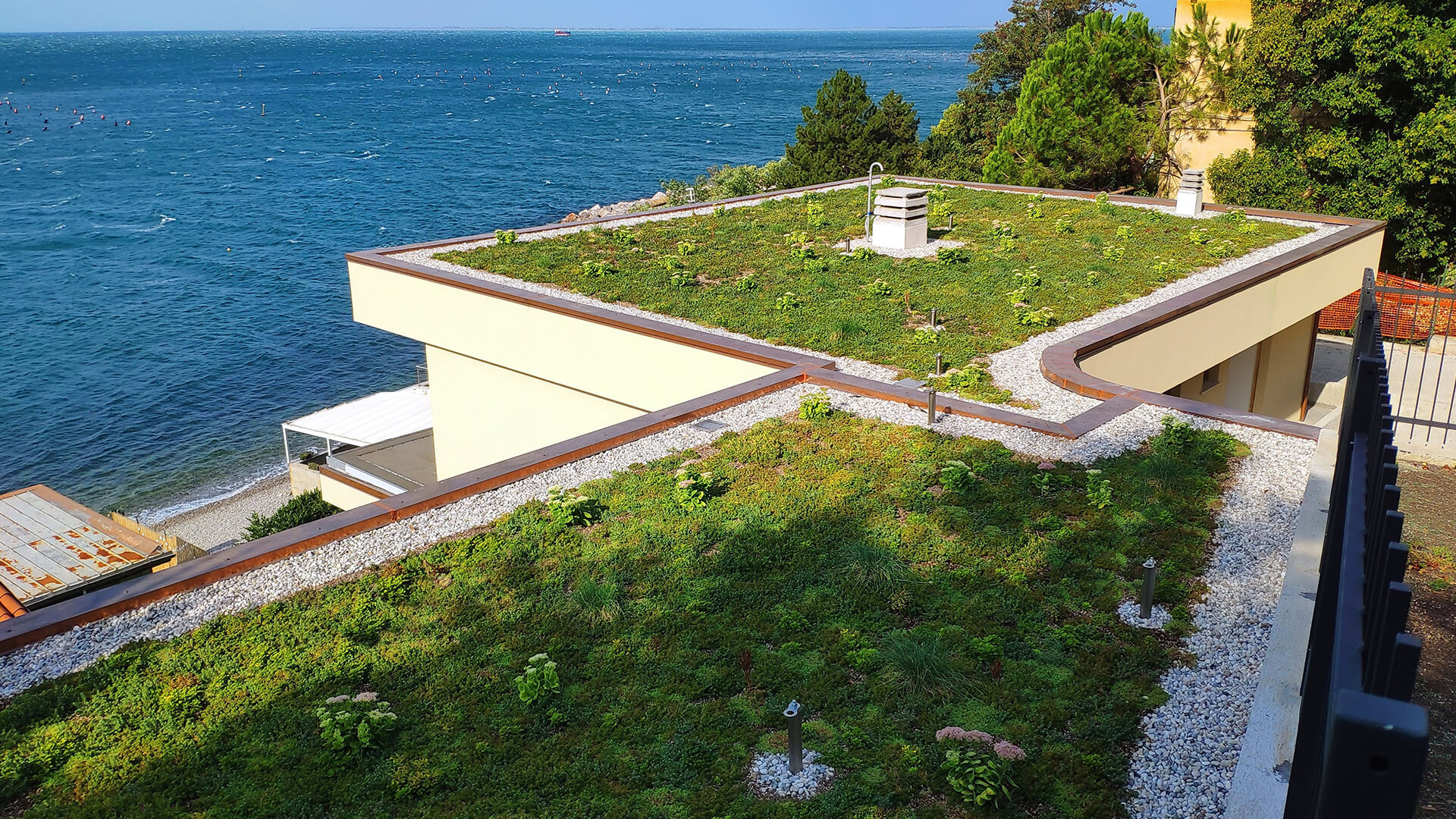Smart city: the city of the future
The relationship between the growth of urban settings and their impact on the environment, the global economy, and the well-being of citizens is a topic at the heart of current city development patterns around the world. In this sense, there is a need to generate development dynamics based on technological innovation, social inclusion, and a smaller ecological impact.
This is the vision behind the idea of Smart Cities, technological and intelligent cities capable of providing useful services to simplify and improve the lives of citizens, and capable of ensuring city development that is attentive to economic efficiency and social equity.
Technology and nature
Blue Green Roof and DAKU IRRIGA solutions, integrate the efficiency of green roof systems with technologies for monitoring and managing (through IoT solutions) their irrigation and rainwater storage systems, as well as monitoring the health of vegetation and substrate. Sensors are planned to be installed within the DAKU stratigraphy to detect temperatures, humidity and certain chemical and physical characteristics of the substrate.
In order to constantly check the amount of water contained in the primary basin (storage/lamination), there is also a level measurement sensor capable of detecting millimeter changes in the water content in the basin. The collected data is managed by an IoT controller that intervenes in the management of discharges for the release of water from the primary basin, and adjusts the amount of water being delivered for the irrigation system based on the water content of the substrate. For example, when following a precipitation, the substrate is saturated with water, the system can automatically deliver less water, then restore normal irrigation activity as soon as moisture sensors installed in the substrate detect the need.
Rooftop green of the future
Thanks to these implementations, DAKU has developed a technological system aimed primarily at optimizing the system's water consumption, but also at creating real technological infrastructure to serve the city and the environment. Green Roofs provide an opportunity for the collection of shareable and accessible environmental data that can accurately describe the interaction between vegetation and urban areas, such as the ability of the vegetation to capture and absorb pollutants.



